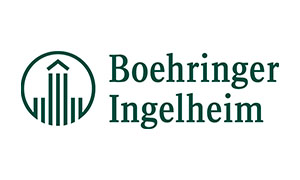By Matthew Reiss, MSE, PhD, Manager, Precision Medicine & Navigation, GO2 for Lung Cancer
This blog post kicks off our series, “Understanding Lung Cancer,” which simplifies the science behind lung cancer. Our goal is to provide a deeper understanding of the disease and what makes it unique. Stay tuned for more in our quarterly Magnifying LeNS newsletter as we delve into the science of one of the world’s most challenging diseases.
The word “cancer” evokes complex and overwhelming emotions. To tackle such an intimidating disease, we must start at the beginning. By understanding how cancer begins, we can understand why it can be challenging to treat and how science is working to change that.
We’ll start with the basics: what cells are, how DNA works, and how damage to DNA can lead to cancer. Future blogs in this series will explore tumor growth, how cancer spreads, and more.
What are cells, and what do they do?
The body is made of trillions of tiny building blocks called cells. If you think of the body as a city, these cells act as workers, each with a specific job to keep the body working properly. Groups of cells with the same job grow and divide to form all the body’s tissues and organs, including the lungs.
For cells to work properly, they must follow a specific set of instructions to perform tasks like creating energy, building proteins, or repairing damage. Every cell is carefully regulated to ensure it completes these processes correctly.
What is DNA, and why is it so important?
Inside almost every cell of your body is a material known as deoxyribonucleic acid (DNA). DNA functions as the instruction manual for your cells. This manual tells your cells how to grow, divide, and do their jobs. DNA is organized into sections called genes, which provide specific instructions on building the proteins that act as the tools that keep cells alive and healthy.
Whenever cells divide to replace old or damaged cells, they create a full copy of their DNA so that the new cells have the same set of instructions as the old cells. Occasionally, if something in this system goes wrong, or if the DNA gets damaged, it can lead to problems—sometimes problems as serious as cancer.
Why does DNA damage happen?
When the specific instructions found within DNA are changed or damaged, it is called a mutation. Mutations can happen for several reasons:
- Mistakes during cell division: Sometimes, errors happen when cells copy their DNA during division. Many of these mistakes happen randomly.
- Exposure to harmful environmental factors: Some substances—such as cigarette smoke, air pollution, or asbestos—are known to cause DNA.
- Inherited mutations: Some people have a family history of changes in their DNA that increase their risk of developing certain cancers, including lung cancer.
Not all mutations are harmful or lead to cancer. Many times, cells can fix the damaged DNA. Other times, the cell will find damage and self-destruct to prevent it from causing problems. However, there are times when the damage slips through the cracks, the cell continues to grow, and the mutation is passed on to future cells. When this happens to certain key genes, it can lead to cancer.
How does DNA damage lead to cancer?
If a mutation affects genes controlling how a cell grows, it can cause it to grow and divide abnormally. These genes include:
- Tumor suppressors: These genes act like brakes on a car, preventing cells from growing out of control.
- Oncogenes: These genes act like a car’s gas pedal, encouraging cells to grow and divide. They are essential to cells working correctly but can be dangerous if they become stuck in the “on” position.
When a mutation deactivates tumor suppressor genes or over-activates oncogenes, cells either ignore signals telling them to self-destruct when damaged or start dividing uncontrollably.
Over time, uncontrolled cell growth leads to the formation of a tumor. Not all tumors are cancerous, but those that invade surrounding tissues or spread to other parts of the body are called malignant tumors. This is what we usually refer to as cancer.
What about lung cancer?
The lungs are particularly vulnerable to DNA damage because they are constantly exposed to the air we breathe. As a result, cells lining the airways are exposed to harmful substances, such as tobacco smoke or other pollutants, which can damage their DNA and increase the risk of lung cancer. According to the CDC, tobacco smoking is still the leading cause of lung cancer, responsible for about 80 to 90% of cases.
It is important to remember that not everyone who develops lung cancer has a smoking history. Lung cancer may also result from many mutations building up over time. This is why the risk of lung cancer also increases with age or prolonged exposure to other harmful factors over time.
Why understanding this matters
To understand how cancer starts, we must understand the basics of cells, DNA, and mutation. To understand lung cancer, we must understand why the lungs are more vulnerable to DNA damage. With these understandings, we can then take steps to reduce risk and support early detection. Understanding how lung cancer happens also allows us to uncover new, better ways to treat lung cancer.
In the next part of this series, we’ll discuss the specific molecular drivers of lung cancer and how they help cancer grow.
Subscribe to the Magnifying Lens and other GO2 for Lung Cancer newsletters. Learning more can help us all to better advocate for lung health, cancer awareness, and prevention.
Thanks to support from our partners






Leave A Comment